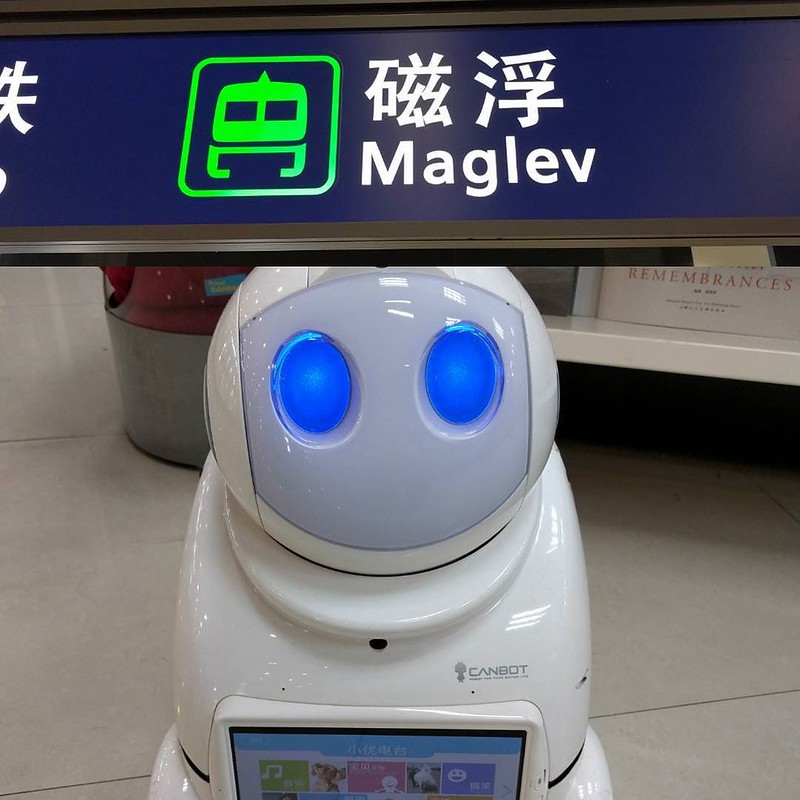This and the following blog posts aims to document a trip to Shenzhen, to the cradle of things. To read all blog posts in the series, click on the viewsource tag.
Please note: These are quick notes typed up while traveling. Apologies for any typos, missing links, etc.
Of all things electronic, that is: We’re here to learn more about how connected products are made, how the Internet of Things (IoT) comes to be. Our crew consists of three parties engaged in advocating for a human-centric, responsible, open and desirable IoT:
- Marcel Schouwenaar, Harm van Beek, Jan-Geert Munneke and Quang Anh Bui (Just Things Foundation & The Incredible Machine). Just Things aims to help organizations both commercial and public to create an internet of things we all benefit from.
- Michelle Thorne (Mozilla Open IoT Studio). The Open IoT Studio aims to learn how to embed internet stewardship in the making of meaningful, connected things.
- Peter Bihr (ThingsCon & The Waving Cat). ThingsCon is a global community of practitioners and an event series fostering the creating of a human-centric, responsible IoT
Together, we’ll be spending a week in Shenzhen, where over 90% of all global electronics are manufactured—and increasingly also designed.
But first, two of us—Michelle and I, Peter—arrive in Shanghai for some preliminary scouting, preparation, and most importantly a ThingsCon Salon. This salon isn’t just any event either, but the very first in China and in fact in all of Asia. To see the ThingsCon community extend and expand from Europe to Asia isn’t just a milestone we personally enjoy, but also a sign of the interest in building a responsible IoT.
But I’m getting ahead of the story. It’s day 1, and we just arrived in Shanghai, China.
At the airport, we pick up a pocket wifi right at the baggage claim area: internet sorted. (Sort of, but we’ll come to that later.) Inside the arrivals area, we’re greeted by a robot at a book store, and head for the maglev train—the only one in operation world wide, I believe.
 Ohai there Shanghai. We’ll get along just fine!
Ohai there Shanghai. We’ll get along just fine!
Alas, part of the luggage hasn’t arrive along with us, but at least we don’t have to carry much. We also miss the ATMs somehow, but buy a maglev ticket at the airport by credit card. We’re cashless, and in good spirits. We’re zipping past the cars on the highway with 300 km/h in our levitating train.
Once we get to the end of the maglev line, we’re kind of in the city center, but not quite: It’s still a little while to go. The metro it is. If only we could purchase a metro pass: Alas, we’re still cashless. Foreign credit cards aren’t accepted. We don’t have Wepay (the digital wallet built into Wechat), nor Alipay (another Chinese payment system), nor a Unionpay card. We’re in one of the most modern cities of the world, and stranded because we have no way of paying for a metro ride that costs the equivalent of 30 Eurocents.
We’re in one of the most modern cities of the world, and stranded because we have no way of paying for a metro ride that costs the equivalent of 30 Eurocents.
We hail a cab, then another one, then a third. The game is always the same: The driver closely examines our cards, front and back, and after a minute hands them back, shaking his head. No Unionpay. No Chinese Visa. Not even Wepay?
We retire to a restaurant for a snack, a coffee, and a regroup. Alas, we learn quickly that the same rules apply. Lesson number one of traveling in China as a foreigner: Cash is king. Without a Chinese bank account, most other foreign payment systems are no go.
After a while of scratching our heads, we find our hack: A maglev ticket can be paid by credit card. We buy another maglev ticket back to the airport—it includes a metro day pass. This is much more expensive than a metro ticket, but we’re good to go. We can leave the maglev station and get to our hotel.
We arrived in the future. But are we ready for it?
